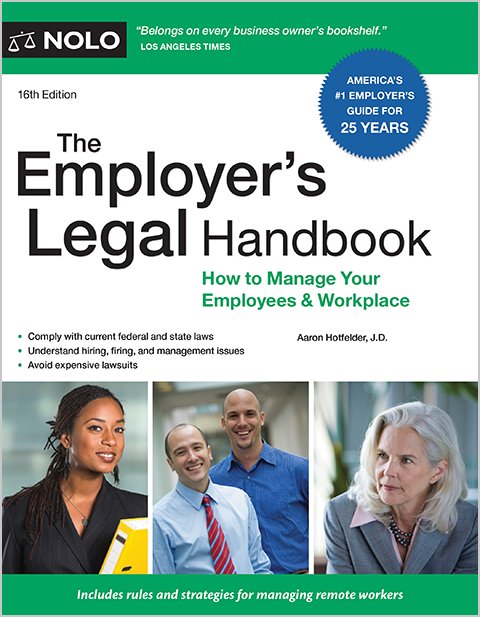If you were forced to quit your job because of intolerable working conditions, you may be able to sue.
If you quit your job because of intolerable work conditions or treatment, in certain circumstances, your resignation may be considered a termination. A resignation under these circumstances is called a "constructive discharge" or "constructive termination."
If you were constructively discharged from your employment, the law will typically treat you as if you were fired. This means that you have certain rights that are typically not available to employees who quit their jobs, including the right to receive unemployment benefits and to file a wrongful termination lawsuit against your employer.
History of Constructive Discharge
Constructive discharge is a legal concept that was first developed by the National Labor Relations Board (NLRB) in the early days of the labor union movement in the United States. Today, the concept of constructive discharge applies to union and non-union employees alike. However, it was originally developed in the 1930s to stop efforts by employers to discourage employees from unionizing or forcing union employees to resign from their positions.
Employer Efforts to Discourage Unionization
Some employers stubbornly opposed efforts by their employees to form unions to collectively negotiate for higher pay rates, more benefits, and better working conditions. These employers used a variety of measures, including physical violence, to discourage employee unionization. In some cases, employees ended up leaving their jobs rather than suffering such abuse at the hands of their employers.
Forced Resignations
Along the same lines, instead of openly discouraging union activity, some employers created intolerable working conditions with the specific intention of forcing employees to resign. Employers often retaliated against employees who had made efforts to form unions. When these employees were forced to resign because of intolerable working conditions, they sued, relying on the constructive discharge provision adopted by the NLRB in the National Labor Relations Act ("the Act"). The U.S. Supreme Court allowed these employees to sue, holding that an employer violates the Act when it "purposely creates working conditions so intolerable that the employee has no option but to resign."
Constructive Discharge for Non-Union Employees
Although the concept of constructive discharge arose out of the union movement, courts have extended it to situations involving non-union employees as well. Although the rules differ in some ways, the standard for what qualifies as a constructive discharge is similar: when an employee quits his or her job because the working conditions are intolerable, the resignation is legally regarded as a termination.
Constructive Discharge and Discrimination
The U.S. Supreme Court has extended the legal concept of constructive discharge to cases brought under Title VII of the Civil Rights Act and the Age Discrimination in Employment Act (ADEA), the federal laws that prohibit discrimination and harassment in employment based on certain protected characteristics. And, many state courts also recognize the concept in similar types of cases under state laws.
If you were harassed or discriminated against because of your gender, race, religion, sex, nationality, age or disability, and it caused you to quit your job, you may be able to file a wrongful termination lawsuit even if you technically quit or resigned.
What Constitutes "Intolerable Working Conditions?"
To successfully argue that you were constructively discharged under federal antidiscrimination laws, you must show that the harassment or discrimination created such intolerable working conditions that you were forced you to quit your job. It won't be enough to show that your supervisor treated you badly or that you were no longer happy at work. Instead, you must show that the working conditions imposed on you were "objectively" intolerable, meaning that the working conditions were so bad that the average person in your situation would also have been compelled to resign. In practice, this is a very high standard that is often difficult to meet. In general, even basic discrimination claims (such as a woman receiving lower pay than a man in the same job) will not meet this standard. The resigning employee must prove that the employer engaged in especially egregious conduct, such as physically harassing the employee, demoting him or her in a humiliating way, or the like.
In some states, workers may be able to sue even if the intolerable working conditions did not constitute illegal discrimination or harassment under Title VII. For example, abusive bullying that is not based on a protected category may be considered intolerable working conditions under state law.
Employee's Duty
In general, if your employer has taken no "tangible action" against you, such as a demotion, pay cut, or the like, you will probably have to show that you reported the working conditions to management and gave your employer a chance to remedy the situation before you resigned. The purpose of this rule is to give employers the opportunity to voluntarily step in and fix the problem, making legal action unnecessary.
A Complicated Question
Were you forced to quit your job in a way that amounts to constructive discharge? As you can see, this is a complex legal question that must take into account the circumstances of each case. If you believe you were constructively discharged, talk to an employment lawyer and get a legal assessment of your potential claim.
Talk to a Lawyer
Need a lawyer? Start here.
How it Works
- Briefly tell us about your case
- Provide your contact information
- Choose attorneys to contact you
- Briefly tell us about your case
- Provide your contact information
- Choose attorneys to contact you



